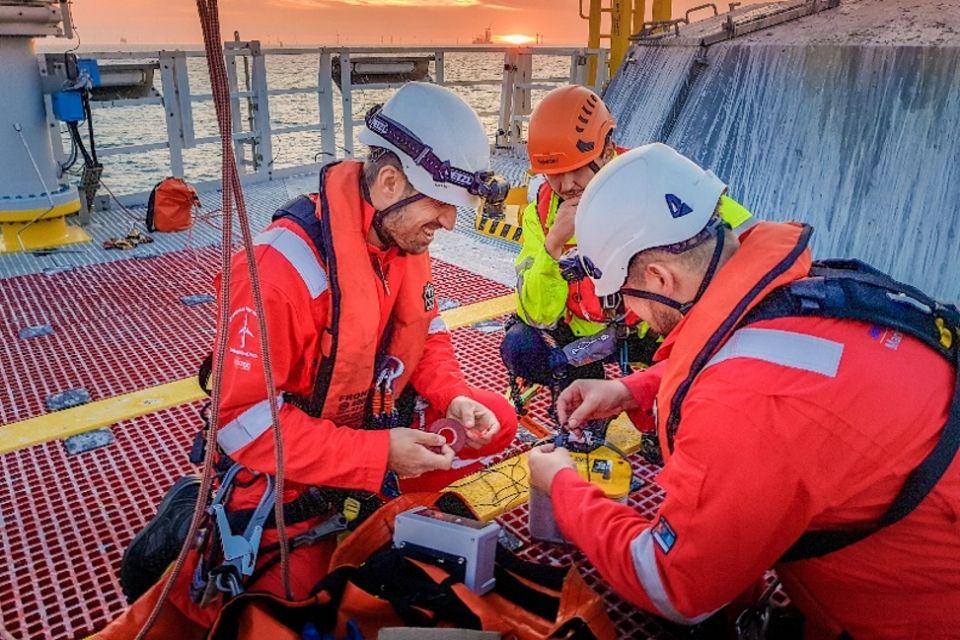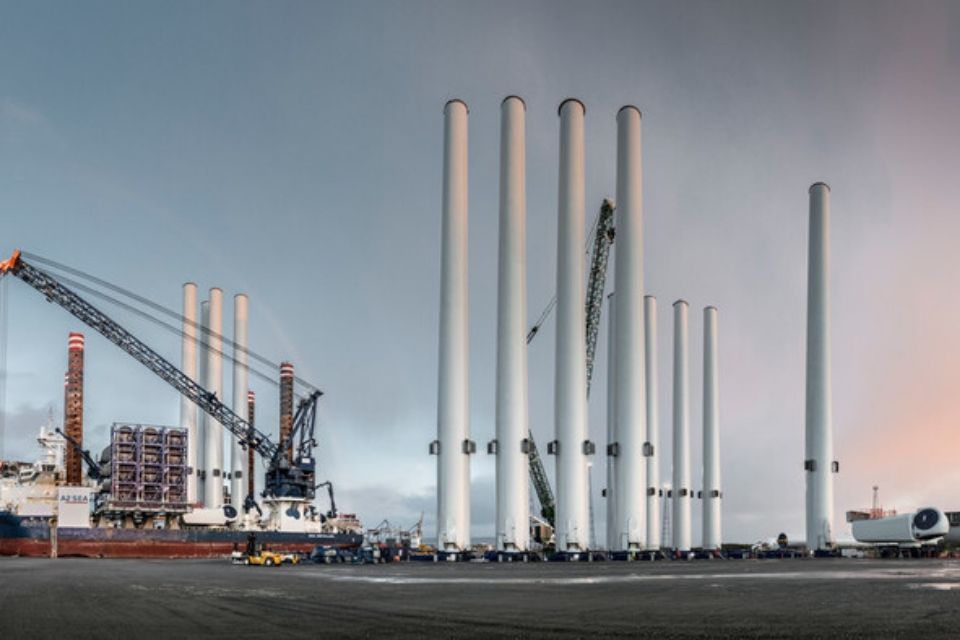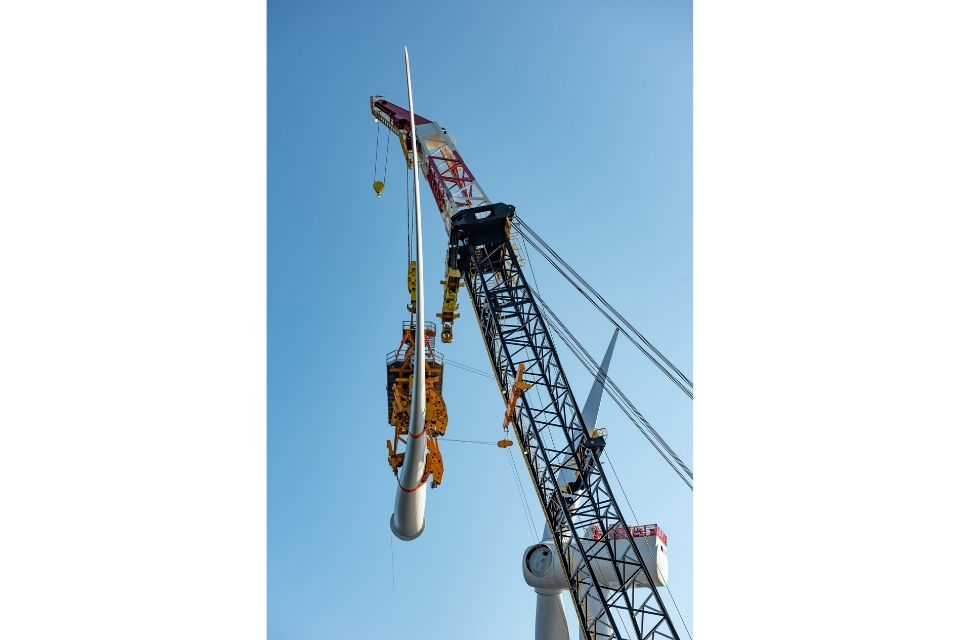Offshore wind Sector Deal - one year on
Updated 4 March 2020
Background
Offshore wind is a success story for the UK. Long term government support has underpinned innovation and investment in the sector, helping to drive down costs while contributing to decarbonisation of the economy. We now have the largest installed offshore wind capacity in the world, with 9.8 gigawatts (GW) installed which will rise to 19.5 GW by mid 2020s. The UK has provided more support for offshore wind than any other country in the world and we anticipate that the technology will play a key role in helping the UK meet net zero by 2050.
The Offshore Wind Sector Deal published in March 2019 set out an ambitious partnership between government and industry to raise the productivity and competitiveness of UK companies to ensure the UK continues to play a leading role as the global market grows in the decades to come.
Progress so far
The Sector Deal set out a suite of far-reaching targets and commitments from both the sector and government aimed at delivering benefits to the UK economy from the ongoing deployment of offshore wind. This partnership between the sector and government will ensure that the UK continues to take a leading role in the sector across the coming decade, benefitting from the growth in deployment both domestically and world-wide.
Since the launch of the Sector Deal, the government and the sector have worked closely to make progress on delivering the commitments. This has already given rise to a number of major developments in the sector, for example:
- development and establishment of Offshore Wind Growth Partnership
- development of Regional Clusters
- appointment of a Diversity Champion

Copyright: James Fisher
Encouraging innovation
The sector has established an Offshore Wind Innovation Group with industry, academic and public sector representatives. This group has built on the technology roadmaps of the Offshore Wind Innovation Hub (Turbines, Substructures, Electrical Infrastructure, and O&M and Windfarm Lifecycle) to develop an innovation support plan for government which is aligned with public sector vision and goals. This has been developed on the basis of projected UK economic benefit through intellectual property and long-term job creation for both domestic and export markets, as well as improved efficiency of offshore wind farms with reduced lifecycle costs and a lower price of electricity for consumers. Leading with Smart & Sustainable Operations & Maintenance as an initial key priority, the group will also define other priority work areas.
Led by Baroness Brown of Cambridge, the sector has finalised a delivery plan for the Solving the Integration Challenge (StIC) workstream. StIC is identifying both innovative solutions to system integration to support the transformation of the power grid, and research and development funding and policies required to accelerate the role of hydrogen within an energy mix with a high level of offshore wind deployment.
Developing skills and improving diversity
The sector has engaged a skills professional to lead work across the skills and diversity agenda. An Investment in Talent Group has been established, comprised of senior representatives across the sector and has met twice.
An HR Forum, and 3 subgroups focusing on gender balance, ethnicity and apprenticeships have been established and are meeting regularly.
The sector has introduced a workforce and skills model developed by the National Skills Academy for Rail (NSAR) to track and report on workforce data. Data is being gathered from the operators, developers and original equipment manufacturers (OEMs) with plans to gather from the clusters over the longer term.
The sector has identified a challenging target to increase the number of black, Asian and minority ethnic workers in the sector from 5% today to 9% in 2030, aiming for a more ambitious target of 12% if feasible.
The industry has set a target that 2.5% of the employed workforce will be apprentices. This target will include technical and non-technical apprentices, new entrants and people on apprenticeships to be upskilled. This figure will be reviewed regularly.
Cost reduction
Since the publication of the Sector Deal, the costs of offshore wind have continued to fall. The 2019 Contract for Difference auction saw 5.5 GW of new offshore wind capacity come forward with record low prices of £39.65/megawatt hour (MWh) and £41.61/MWh (2012 prices) – around 65% lower than projects in the 2015 auction. These projects are expected to be operational around 2023 to 2025.
A healthy UK pipeline
In July 2019, Scotland’s largest project - Beatrice (588 MW) - officially opened. The world’s largest offshore wind farm, Hornsea One (1,218 MW), completed construction in October 2019.
The UK is already preparing for continued deployment in the late 2020s and early 2030s. In September 2019, the Crown Estate launched a new seabed leasing round which will open opportunity for at least 7 GW of new projects in English and Welsh waters. Crown Estate Scotland will also launch their new leasing round in Scottish waters later this year.
Sustainable deployment
Government has paved the way for future deployment of offshore wind by committing £557 million for the future Contract for Difference auctions and policy support for offshore wind but also by creating the pipeline for future wind farms.
Government and the sector are working together to address strategic deployments issues such as radar mitigation, onshore and offshore transmission issues and environmental impacts.
In December, the industry published 2 papers setting out the parameters that they consider need to be addressed to mitigate the grid transmission barriers to deployment. Ofgem’s Decarbonisation Action Plan of February 2020 committed to work with government and industry to review the frameworks for connecting offshore wind generation, and to explore whether a more coordinated offshore transmission system could reduce both financial and environmental costs.
In February 2020 the sector and government departments met to discuss the environmental, consenting, licencing and regulatory barriers to more coordinated infrastructure. Following its commitment in the Sector Deal, the Crown Estate has been engaging with stakeholders in the UK to define the outcomes, goals and delivery routes for a funded Strategic Enabling Actions Programme to meet the challenge of increasing offshore wind deployment in the UK in a co-ordinated and sustainable way.
This Programme is being delivered with the Department for Business, Energy and Industrial Strategy (BEIS) as strategic programme partner, and the Department for Environment, Food and Rural Affairs (Defra) as a supporting partner.
BEIS continues to address the issues raised by air defence (AD) and air traffic control (ATC) radar through the Aviation Management Board. In parallel, the sector and Ministry of Defence (MOD) have set up a Joint Windfarm Mitigation Task Force, overseen by a senior level executive Programme Board. Studies have commenced and key activities are planned for 2020.

Copyright: MHI Vestas Offshore
Improving productivity and raising competitiveness around the UK
A new, £100 million Offshore Wind Growth Partnership (OWGP) fund has been established by the sector to help raise productivity and improve supply chain competitiveness over the next 10 years. With a secretariat provided by the Offshore Renewable Energy (ORE) Catapult, this fund will help UK companies to move up the value chain and seize the opportunities of a growing, global market. The OWGP is chaired by Martin Whitmarsh, former CEO of McLaren Racing, and author of the in-depth review of the UK offshore wind supply chain undertaken as part of the Sector Deal.
The OWGP has completed an in-depth assessment of offshore wind foundations, assessing current and projected requirements for turbine foundations in the UK and abroad, identifying potential barriers to growth and making recommendations to overcome these challenges. This activity is the first in a series of studies which the OWGP will undertake into various parts of the offshore wind supply chain.
In January 2020 the results of the first funding call were announced. 7 UK companies from industries including oil and gas, manufacturing and robotics secured £364,000 in grant funding from the OWGP with an additional £156,000 leveraged in match funding contributions. These projects will drive cost reduction from advanced manufacturing techniques and work to develop advanced sensors, Internet of Things and communications solutions for offshore wind.

Copyright: MHI Vestas Offshore
Actions for supply chain development
Alongside the development of OWGP and innovation activities, the work on the specific recommendations for supply chain development are underway:
- a response to the ‘Whitmarsh’ supply chain review will be published around the Sector Deal anniversary event
- work to identify the challenge of achieving a 60% local content target has commenced. Significant inward investment activity will be required on capex elements of offshore wind projects for this to become a reality
- a revision to the methodology for the measurement of local content will be undertaken – specifically to recognise the importance of UK-produced components for export which are not currently counted as a benefit within the methodology
Regional clusters
Clusters are a collaboration between developers and regional supply chain, public sector and education bodies. The ambition is to increase the industry’s productivity, competitiveness and innovation, while helping to grow these coastal economies. 8 regional offshore wind clusters are being developed across the UK. They are:
- Deep Wind (North Scotland)
- Forth & Tay Offshore
- North East England
- Humber
- East Anglia
- Solent
- Celtic Sea Cluster
- North West & North Wales

Copyright: SSE Renewables
Building on our success
The Sector Deal is progressing well and is on track. Over the next year, the sector and the government will build on the progress made over this first 12 months.
We will also look to be even more ambitious. The UK introduced a formal net zero target into law in 2019 – the first major economy in the world to do so. We expect the renewable energy sector, especially offshore wind, to have a major role in helping the UK achieve this. Meeting net zero is likely to require higher volumes of offshore wind deployment than previously envisaged, to meet greater levels of electrification across the economy. The government will work with the sector and other stakeholders to build upon the strong foundations of this Sector Deal to accelerate sustainable deployment up to 2030. We will also work with the sector to prepare for the 2030s and 2040s, for example by enabling new innovations such as floating offshore wind and hybrid projects.
Sector Deal implementation plan for 2020
| Date | Milestones |
|---|---|
| January 2020 | First OWGP funding competition winners announced |
| January 2020 | UK Strategic Capability Assessment Offshore Wind Foundations published |
| March 2020 | Ethnicity and apprenticeship targets announced |
| March 2020 | Response to Whitmarsh Review published |
| June 2020 | Global Offshore Wind Military activities |
| June 2020 | OWGP Strand A playbook published |
| June 2020 | Sharing and growth pilot launched |
| June 2020 | Launch of Industry Innovation Programme |
| June 2020 | Further strategic capability assessments |
| September 2020 | Revision of Local Content Methodology launched |
| September 2020 | Solving the Integration Challenge report published |
| November 2020 | Diversity and Inclusion plan published |
| November 2020 | Apprenticeship data gathering exercise |
